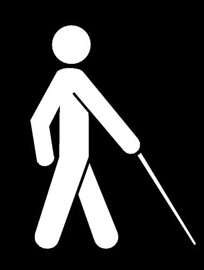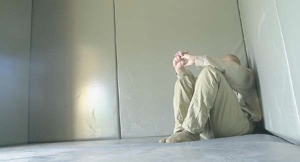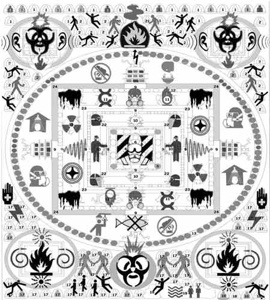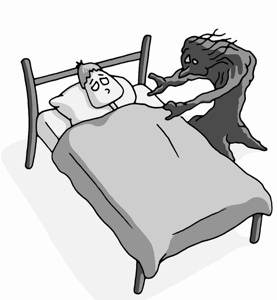Friday, November 30, 2007
Wednesday, November 28, 2007
A quick and dirty IQ test result
Your IQ Is 125 |
 Your Logical Intelligence is Below Average Your Verbal Intelligence is Genius Your Mathematical Intelligence is Exceptional Your General Knowledge is Exceptional |
Light-powered toothbrush could eliminate need for toothpaste

The Shiken Company of Japan is looking for ways to take dentistry into the future - a time when your toothbrush may no longer need your toothpaste to get the job done.
The company is making a prototype solar-powered toothbrush, which causes a chemical reaction in your mouth, with the hopes of improving the elimination of harmful plaque and bacteria.
Closer to home, U Sask dentistry professor emeritus Dr. Kunio Komiyama and his colleague Dr. Gerry Uswak are investigating whether the new gizmo works any better than the more traditional toothbrush-toothpaste duo.
Dr. Komiyama designed the first model of this type of toothbrush more than 15 years ago: It contained a titanium dioxide rod in the neck of the brush, just below the nylon bristles. Any light falling on the wet rod would release electrons, which would react to the acid typically found in the mouth, helping break down plaque.
The latest model, the Soladey-J3X, works in much in the same way, except that it's twice as powerful.
The brush also features a solar panel at the base, which transmits electrons to the top of the toothbrush through a lead wire.
Dr. Komiyama tested Soladey-J3X on cultures of two types of bacteria that play a major role in periodontal disease. He found that there was a "complete destruction of bacterial cells," according to the Edmonton Journal.
The toothbrush needs about as much light as a solar-powered calculator.
10 amazing facts about dreams.
10. Blind People Dream
People who become blind after birth can see images in their dreams. People who are born blind do not see any images, but have dreams equally vivid involving their other senses of sound, smell, touch and emotion. It is hard for a seeing person to imagine, but the body’s need for sleep is so strong that it is able to handle virtually all physical situations to make it happen.
9. You Forget 90% of your Dreams
Within 5 minutes of waking, half of your dream if forgotten. Within 10, 90% is gone. The famous poet, Samuel Taylor Coleridge, woke one morning having had a fantastic dream (likely opium induced) - he put pen to paper and began to describe his “vision in a dream” in what has become one of English’s most famous poems: Kubla Khan. Part way through (54 lines in fact) he was interrupted by a “Person from Porlock“. Coleridge returned to his poem but could not remember the rest of his dream. The poem was never completed.
In Xanadu did Kubla Khan
A stately pleasure-dome decree:
Where Alph, the sacred river, ran
Through caverns measureless to man
Down to a sunless sea.
[…]
Curiously, Robert Louis Stevenson came up with the story of Doctor Jeckyll and Mr. Hyde whilst he was dreaming. Wikipedia has more on that here. Mary Shelley’s Frankenstein was also the brainchild of a dream.
8. Everybody Dreams
Every human being dreams (except in cases of extreme psychological disorder) but men and women have different dreams and different physical reactions. Men tend to dream more about other men, while women tend to dream equally about men and women. In addition, both men and women experience sexually related physical reactions to their dreams regardless of whether the dream is sexual in nature; males experience erections and females experience increased vaginal blood flow.
7. Dreams Prevent Psychosis
In a recent sleep study, students who were awakened at the beginning of each dream, but still allowed their 8 hours of sleep, all experienced difficulty in concentration, irritability, hallucinations, and signs of psychosis after only 3 days. When finally allowed their REM sleep the student’s brains made up for lost time by greatly increasing the percentage of sleep spent in the REM stage. [Source]
6. We Only Dream of What We Know
Our dreams are frequently full of strangers who play out certain parts - did you know that your mind is not inventing those faces - they are real faces of real people that you have seen during your life but may not know or remember? The evil killer in your latest dream may be the guy who pumped petrol in to your Dad’s car when you were just a little kid. We have all seen hundreds of thousands of faces through our lives, so we have an endless supply of characters for our brain to utilize during our dreams.
5. Not Everyone Dreams in Color
A full 12% of sighted people dream exclusively in black and white. The remaining number dream in full color. People also tend to have common themes in dreams, which are situations relating to school, being chased, running slowly/in place, sexual experiences, falling, arriving too late, a person now alive being dead, teeth falling out, flying, failing an examination, or a car accident. It is unknown whether the impact of a dream relating to violence or death is more emotionally charged for a person who dreams in color than one who dreams in black and white. [Source]
4. Dreams are not about what they are about
If you dream about some particular subject it is not often that the dream is about that. Dreams speak in a deeply symbolic language. The unconscious mind tries to compare your dream to something else, which is similar. Its like writing a poem and saying that a group of ants were like machines that never stop. But you would never compare something to itself, for example: “That beautiful sunset was like a beautiful sunset”. So whatever symbol your dream picks on it is most unlikely to be a symbol for itself.
3. Quitters have more vivid dreams
People who have smoked cigarettes for a long time who stop, have reported much more vivid dreams than they would normally experience. Additionally, according to the Journal of Abnormal Psychology: “Among 293 smokers abstinent for between 1 and 4 weeks, 33% reported having at least 1 dream about smoking. In most dreams, subjects caught themselves smoking and felt strong negative emotions, such as panic and guilt. Dreams about smoking were the result of tobacco withdrawal, as 97% of subjects did not have them while smoking, and their occurrence was significantly related to the duration of abstinence. They were rated as more vivid than the usual dreams and were as common as most major tobacco withdrawal symptoms.” [Source]
2. External Stimuli Invade our Dreams
This is called Dream Incorporation and it is the experience that most of us have had where a sound from reality is heard in our dream and incorporated in some way. A similar (though less external) example would be when you are physically thirsty and your mind incorporates that feeling in to your dream. My own experience of this includes repeatedly drinking a large glass of water in the dream which satisfies me, only to find the thirst returning shortly after - this thirst… drink… thirst… loop often recurs until I wake up and have a real drink. The famous painting above (Dream Caused by the Flight of a Bee around a Pomegranate a Second Before Awakening) by Salvador Dali, depicts this concept.
1. You are paralyzed while you sleep
Believe it or not, your body is virtually paralyzed during your sleep - most likely to prevent your body from acting out aspects of your dreams. According to the Wikipedia article on dreaming, “Glands begin to secrete a hormone that helps induce sleep and neurons send signals to the spinal cord which cause the body to relax and later become essentially paralyzed.”
Bonus: Extra Facts
1. When you are snoring, you are not dreaming.
2. Toddlers do not dream about themselves until around the age of 3. From the same age, children typically have many more nightmares than adults do until age 7 or 8.
3. If you are awakened out of REM (Rapid Eye Movement) sleep, you are more likely to remember your dream in a more vivid way than you would if you woke from a full night sleep.









